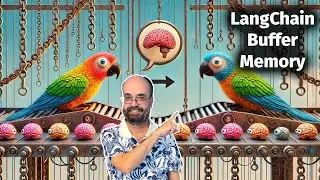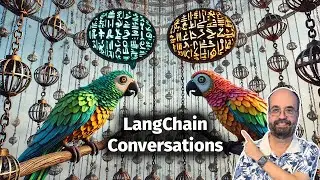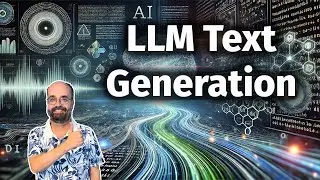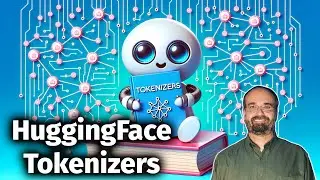LangChain Conversations (4.1)
LangChain Conversations facilitate interactions with large language models (LLMs) by managing conversation memory, allowing LLMs to reference past dialogues as if engaging in a human conversation. Unlike humans, LLMs lack inherent memory beyond their immediate context, requiring external systems like LangChain to store and reintroduce previous conversational content into each new prompt. This is achieved by maintaining a comprehensive transcript of the entire conversation, which grows over time and is used by the LLM to generate contextually relevant responses. This method enables LLMs to maintain a continuous and coherent conversation, creating a more natural and interactive user experience.
The provided code demonstrates the creation of a simple conversation utility that showcases how LLMs can recall and use past interactions within a dialogue. It begins with a function to initialize a conversation, setting up a system message that defines the LLM's role. A second function, converse, handles the dynamic interaction between the user and the LLM, appending each user input and corresponding LLM response to the conversation history. This history allows the LLM to remember details, such as the user's name, as the conversation progresses. The utility further enhances user interaction by displaying responses in Markdown format, leveraging LangChain's capabilities to manage and utilize conversational memory effectively.
Code for This Video:
https://github.com/jeffheaton/app_gen...
~~~~~~~~~~~~~~~ COURSE MATERIAL ~~~~~~~~~~~~~~~
📖 Textbook - Coming soon
😸🐙 GitHub - https://github.com/jeffheaton/app_gen...
▶️ Play List - • Course Overview: Applications of Gene...
~~~~~~~~~~~~~~~ CONNECT ~~~~~~~~~~~~~~~
🖥️ Website: https://www.heatonresearch.com/
🐦 Twitter - / jeffheaton
😸🐙 GitHub - https://github.com/jeffheaton
📸 Instagram - / jeffheatondotcom
🦾 Discord: / discord
▶️ Subscribe: https://www.youtube.com/c/heatonresea...
~~~~~~~~~~~~~~ SUPPORT ME 🙏~~~~~~~~~~~~~~
🅿 Patreon - / jeffheaton
🙏 Other Ways to Support (some free) - https://www.heatonresearch.com/suppor...
~~~~~~~~~~~~~~~~~~~~~~~~~~~~
#LangChain #AIConversations #LLM #ConversationalAI #MemoryManagement #AIInteraction #AIChatbots #TechEducation #NaturalLanguageProcessing #AIinPractice







![[4K] Amazing Schlieren Traction Elevator at Sorell Hotel in Zurich, Switzerland](https://images.videosashka.com/watch/pWu47O4tK2o)























